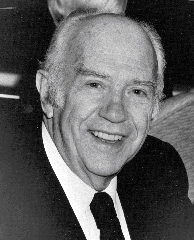One of the Corps' Most Distinguished Civil Engineers Escaped Nazi Persecution

 |
|
| Harry Schwarz |
|
"Mentor," according to The American Heritage Dictionary, means "a wise and trusted counselor or teacher." Only a few twentieth-century engineers in the public service meet this high standard, but Harry Schwarz (1918-1997), who served with the U.S. Army Corps of Engineers during a time of major changes in water resources planning, clears the bar easily. His many disciples both in and out of government testify to his role as an educator. First within the Corps of Engineers and later as a professor at Clark University, he taught scores of students and colleagues new concepts in water resources planning; concepts that he not only helped shape but was among the first to apply.
Born in Austria of Jewish faith, Harry witnessed the German takeover of his country and the subsequent Nazi persecution of Austrian Jews. He recalled that in his second year studying engineering at the Technical University in Vienna, a sign appeared at the University, "No Jews and dogs allowed." Not allowed to continue his education and enduring anti-Semitic oppression throughout the country, Harry emigrated to the United States in 1938. He served with U.S. forces during the War, advancing from the rank of private to captain, and completed his undergraduate work at The George Washington University after World War II. By that time, he was already heavily involved in water resources engineering, having joined the Corps of Engineers in 1947.
Schwarz’s leadership as a practicing engineer using new planning approaches ensures his historical significance, perhaps even more than his importance as a mentor. His interest in new developments can already be seen early in his career, when his work advanced and popularized innovative approaches to hydrology within the Corps of Engineers and, indeed, within the larger water resources community. More significant, however, emerging tools and theories in the late 1950s and early 1960s enabled him to further water resources planning in ways that sharply differed from earlier approaches.
By the 1950s, the distinction—and often incongruity—between economic and administrative efficiency in natural resource development had become clear. Planning based on economic efficiency may have had intellectual validity, but often still floundered because of the disparity between political and natural resource boundaries. Political and financial factors often overwhelmed the planning process. Political scientists warned that rational water allocation required political as well as economic calculations.
This last point was examined explicitly at Harvard University, where in 1955, professors Arthur Maass and Maynard Hufschmidt established the Harvard Water Program, a multidisciplinary research and training program to develop new methodological techniques in water resources planning. The program proposed a new approach to economic evaluation—multiobjective analysis—and Harry Schwarz became its leading practitioner. Not to be confused with multipurpose planning, which focuses on irrigation, flood control, navigation, etc., multiobjective analysis addresses actual social objectives, such as income generation, food or industrial production, and regional development. It designs water systems to address all the objectives sought by the planners, including non-economic values such as environmental quality or preserving a well-established ethnic neighborhood. Tradeoffs are necessary.
Schwarz participated in the Harvard Water Program in the late 1950s, at the same time that he headed the Potomac River Basin Study, which was among the first to consider social impacts and to evaluate the relationship between water quality and quantity. Later, Schwarz applied some of the ideas of the Harvard Water Program to the Susquehanna River Basin study, in particular the use of computer models to portray various possible hydrological events. Finally, as leader of the North Atlantic Regional (NAR) study in the late 1960s, Schwarz headed a team of Corps and outside advisors who developed a "framework" study that provided an overall plan for the development of water resources in an area stretching from Maine to Virginia. This study remains the outstanding example of multiobjective analysis. For a short time before his retirement in 1973, Schwarz also headed the Northeast Water Supply (NEWS) study.
In providing direction to these studies, Schwarz transformed theory and abstract calculations into plans that were truly meant to improve people’s lives in equitable and environmentally responsible ways. Many of the ideas he helped implement—the emphasis on watershed management, the relationship between water quality and quantity, and the responsible reconciliation of environmental stewardship with economic development—appear very modern. They may even strike the reader as controversies still unresolved. Indeed, as we face the problems of the twenty-first century, the significance of Schwarz’s contributions grows. And the answers he provided still seem relevant and worthy of consideration.
* * *
April 2001